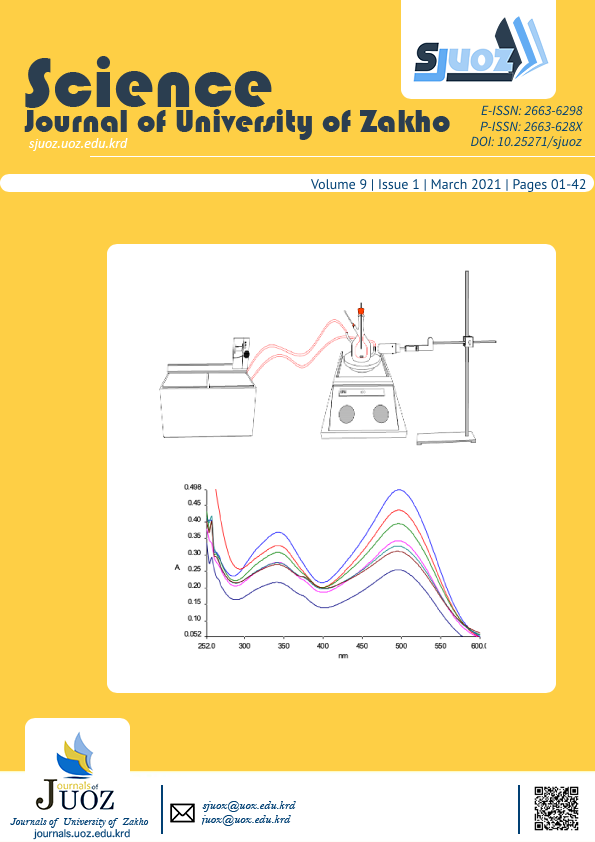Pain Caused by Ear Tagging in Kids of Native Black Goats
Abstract
There is no study about changes in behaviour and peripheral temperature of kid goats undergoing ear tagging procedure. This study was designed to elucidate that pain caused by ear tagging affects peripheral temperatures and behavioural observations in Karadi kid goats. Nineteen native black goat kids, aged 10 – 14 days, were used in this study. Eye and nasal temperatures were recorded before the ear tagging process, and after ear tagging 5 periods in 30 minutes. Besides, the researchers observed each kid's behaviour for 30 minutes before ear tagging and 30 minutes after it, using focal sampling method and the data recorded with instantaneous time sampling to measure the duration and frequency of each behaviour of the kids. Results revealed that peripheral temperatures were significantly decreased for both eye (P≤0.01) and ear (P≤0.01) after ear tagging. The temperatures of both eye and ear decreased after tagging significantly (P≤0.01) for 30 minutes. The proportion of time kid goats spent normal standing and suckling the dam’s teat decreased whereas the proportion of time spent head-shaking increased after tagging. Significant differences were found between abnormal standing (P≤0.01) and vocalization (P≤0.01). It is concluded that ear tagging causes a considerable pain in kid goats and using surface temperatures and behaviour are useful indicators to approve it.
Full text article
Authors
Copyright (c) 2021 Hawar M.H. Zebaria, Hoger M. Hidayet, Assel A. I. Al-Naqshabendy, Nizar J. Hussein, Nawroz A. Kakarash

This work is licensed under a Creative Commons Attribution 4.0 International License.
Authors who publish with this journal agree to the following terms:
- Authors retain copyright and grant the journal right of first publication with the work simultaneously licensed under a Creative Commons Attribution License [CC BY-NC-SA 4.0] that allows others to share the work with an acknowledgment of the work's authorship and initial publication in this journal.
- Authors are able to enter into separate, additional contractual arrangements for the non-exclusive distribution of the journal's published version of the work, with an acknowledgment of its initial publication in this journal.
- Authors are permitted and encouraged to post their work online.
